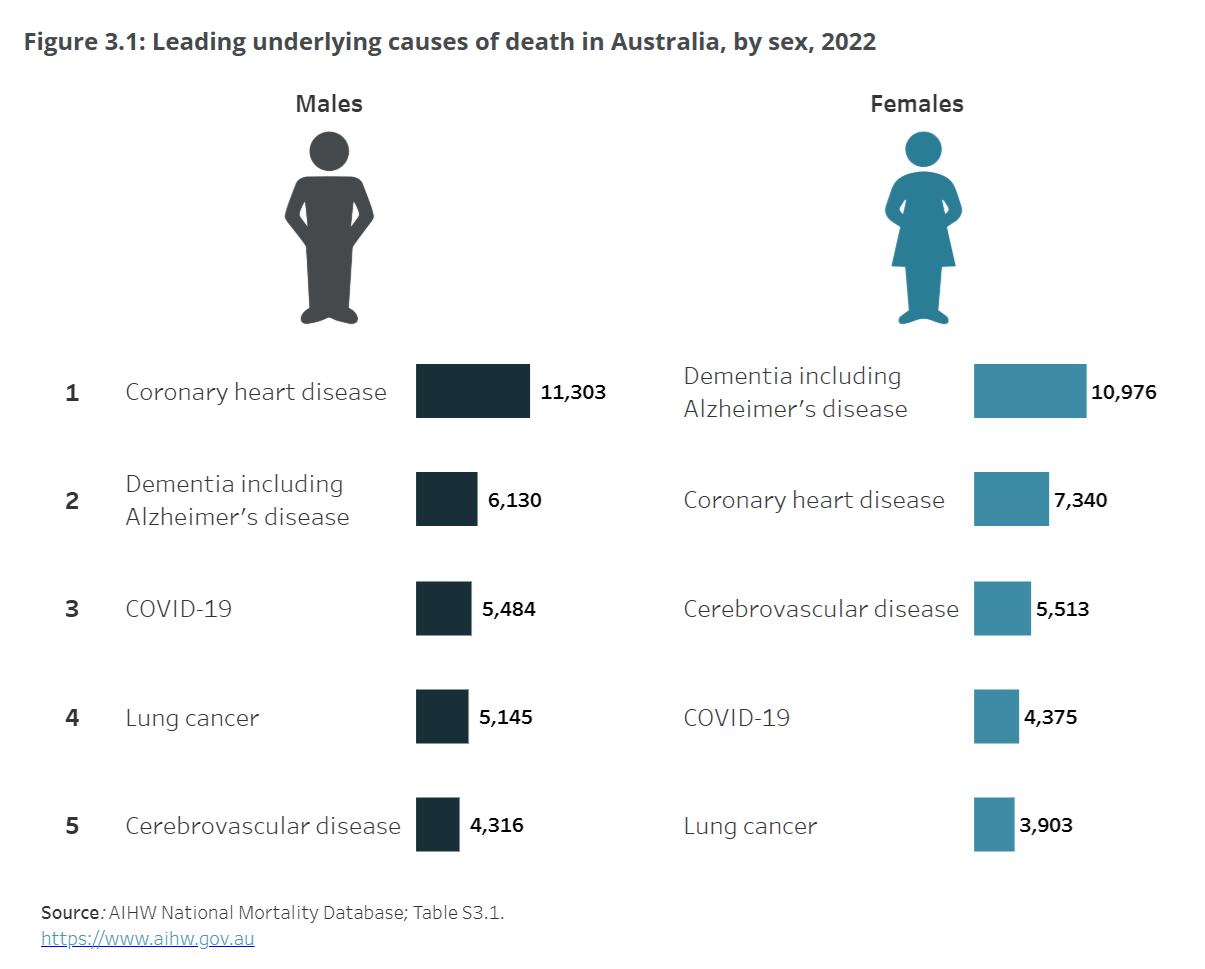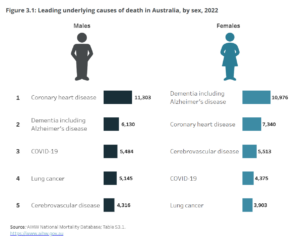
We are urged to adopt a healthy lifestyle for extending our lives and ensuring a better quality of life, especially in our older years.
The current list for a healthy lifestyle includes:
- Avoiding ultra-processed food and smoking
- Not abusing alcohol or opioids
- Limiting sugar intake
- Eating plenty of legumes, vegetables and grains
- Prioritising sleep and mental health
- Incorporating physical activity
What does this give you?
Recent research shows that this can add 10 plus years to your life expectancy.
A study in 2018 showed that making it to 80 or even 90 is largely in our control.
Life expectancy rates at 501 depending on the number of risk-lowering lifestyle factors adopted:
– None All five
For women 79 years 93.1 years
For men 75.5 years 87.6 years
The five risk-lowering factors were: never smoking, a healthy weight, regular physical activity, a healthy diet, and moderate alcohol consumption
Another study published last year, which analysed the lifestyles of more than 276,000 male and female United States veterans, found that adopting eight healthy behaviours could add up to 24 years to people’s lives. 2
Life expectancy rates at 402 depending on the number of risk-lowering lifestyle factors adopted.
– None All eight
For women 67 years 87.5 years
For men 63 years 87 years
The eight risk-lowering lifestyle factors were: adhering to a whole-food, plant-predominant eating pattern, having regular consistent physical activity, managing negative stress, not smoking, having restorative sleep, no excessive alcohol consumption, no opioid use disorder, and having positive social connections
But what of those people who smoke and drink and live to over 100?
The latest research indicates that about 1% of the population has a special genetic makeup that virtually ensures longevity. Without this genetic advantage, even if you do everything right, you are unlikely to make it to 100.
The genes that have so far been identified are:
- the APOE gene which influences the risk for Alzheimer’s disease: Those who carry the APOE4 variant have an increased risk, while those with the APOE2 version are at a decreased risk. Long-lived families have a higher prevalence of APOE2 than the average population.3
- the FOXOs gene which impacts aging and lifespan through management of energy metabolism, oxidative stress, immunity, inflammation, stem cell maintenance, etc.4
Hydra has only one FoxO gene and it gives immortality to this small freshwater tube-shaped animal.

FoxO3 is of particular interest as it regulates cellular homeostasis, particularly of stem cells, and of inflammation, which is a common component of age-related diseases.
People with these special genes live longer and have lower rates of age-related diseases, like heart disease, cancer and dementia.
How has life expectancy changed in the past few years?
Whilst COVID had an impact on global life expectancy, wiping out almost of decade of gains and dropping it back to 2012 levels5, Australia was largely unimpacted, with a .1 years reduction in life expectancy calculated by the Australian Bureau of Statistics.
However, Australia’s life expectancy has now gone backwards for the second time, again reducing life expectancy by .1 years. 9
This is being blamed on chronic disease, obesity, poor mental health, and an overwhelmed healthcare system.
There has also been an increase in the number of years people spend in ill-health, increasing to 9.7 years for males and 11.5 years for females.
(For the comprehensive report, see Australia’s Health 2024, the 19th biennial report from the Australian Institute of Health and Welfare’s https://www.aihw.gov.au/reports-data/australias-health.)
Australia has been a role model in terms of preventative action to improve the health of its citizens, with tobacco control and a massive reduction in deaths due to cervical cancer and cardiovascular disease. 6
Where we still need to do work
Australia will need to ensure it retains an appropriate focus on health habits. For example:
- whilst smoking rates have dropped, the adoption of e-cigarettes has taken up the slack with users being predominantly 18- to 24-year-olds who have never smoked before10
- obesity, which is linked to many chronicconditions including type 2 diabetes, coronary heart disease and dementia, whilst ensuring weight is not stigmatised
- dementia, now a leading cause of death, especially for women, accounted for 9.0% of all deaths in 2022 (AIHW 2024b)
- chronic conditions contributed to 90% of all deaths in 2022 (AIHW 2024a).

Graph: Leading underlying causes of death by gender, Australia 20218
- in 2022, 37% of adults aged 18–64 did not meet the physical activity guidelines, although this is a massive improvement from 2017–18 when 51% did not meet the guidelines
- 94% of adults did not meet Australian Dietary Guidelines for daily serves of vegetables, and
- 56% did not meet the guideline for daily serves of fruit.6
How Pilates can help
Pilates is the most popular form of exercise currently, both globally and nationally. The high uptake should improve physical activity and assist with many of the conditions that contribute to mortality.
Given its high level of adherence, that is also a bonus in keeping people active.
In future instalments of Talking Point, we will address the latest research on how Pilates can help with some of these chronic conditions, and other interesting topics, like
- What is the impact of eating late at night?
- How much exercise is needed to live longer?
Article written by Robyn Rix, PAA President
References:
- Yanping Li et al, Impact of Healthy Lifestyle Factors on Life Expectancies in the US Population (2018), AHA Journals, Volume 138, Number 4, https://doi.org/10.1161/CIRCULATIONAHA.117.032047
- Xuan-Mai T Nguyen et al, Impact of 8 lifestyle factors on mortality and life expectancy among United States veterans: The Million Veteran Program, The American Journal of Clinical Nutrition, Volume 119, Issue 1, 2024, Pages 127-135, ISSN 0002-9165, https://doi.org/10.1016/j.ajcnut.2023.10.032.
- https://www.nytimes.com/2025/01/08/well/longevity-influences-genetics-lifestyle.html?campaign_id=190&emc=edit_ufn_20250119&instance_id=145151&nl=from-the-times®i_id=119806541&segment_id=188666&user_id=7e51d4faa63eef8d9131589dca7f686b
- https://pmc.ncbi.nlm.nih.gov/articles/PMC5403515/
- https://www.who.int/news/item/24-05-2024-covid-19-eliminated-a-decade-of-progress-in-global-level-of-life-expectancy
- https://www.aihw.gov.au/reports/australias-health/chronic-conditions-challenge
- Schumacher, Austin E et al., Global age-sex-specific mortality, life expectancy, and population estimates in 204 countries and territories and 811 subnational locations, 1950–2021, and the impact of the COVID-19 pandemic: a comprehensive demographic analysis for the Global Burden of Disease Study 2021, The Lancet, Volume 403, Issue 10440, 1989 – 2056
- https://www.statista.com/statistics/628367/australia-death-causes-by-gender/
- https://www.aihw.gov.au/reports/life-expectancy-deaths/deaths-in-australia/contents/life-expectancy
- https://www.tobaccoinaustralia.org.au/chapter-18-e-cigarettes/18-3-legal#:~:text=Between%202019%20and%202022%E2%80%9323%2C%20there%20was%20a%20large%20increase,1

Comments are closed.